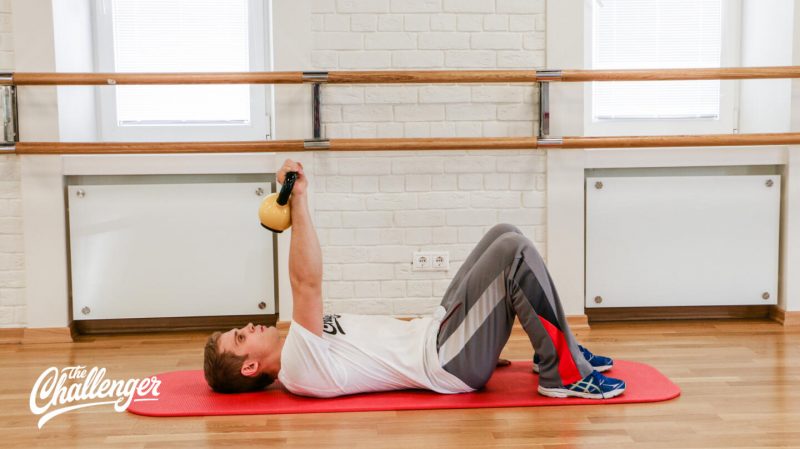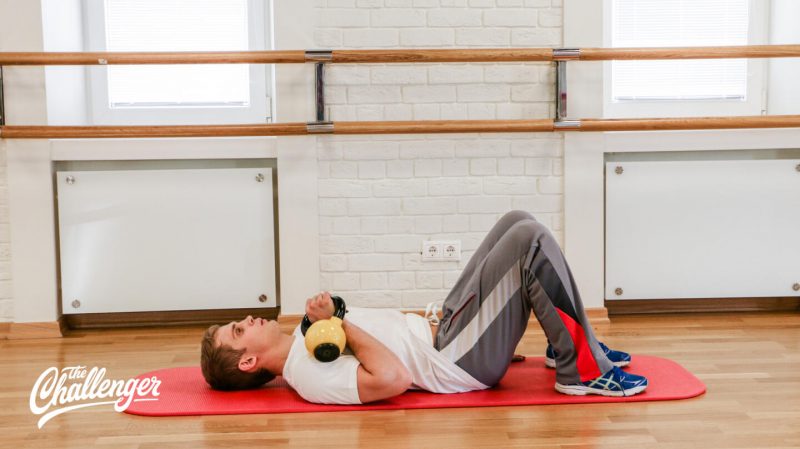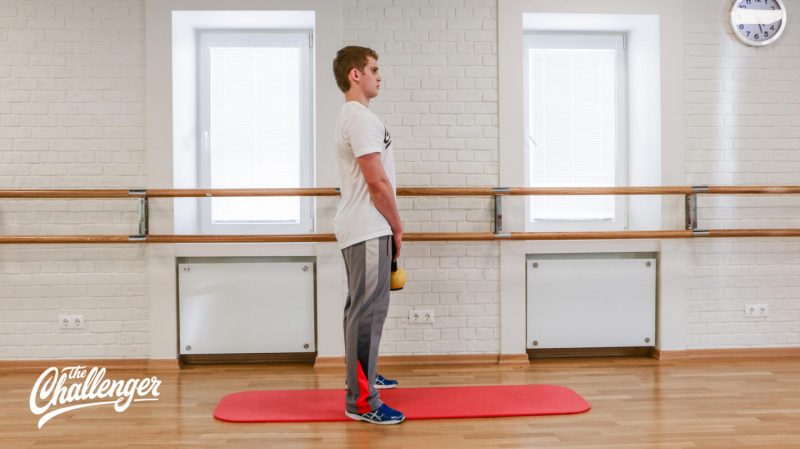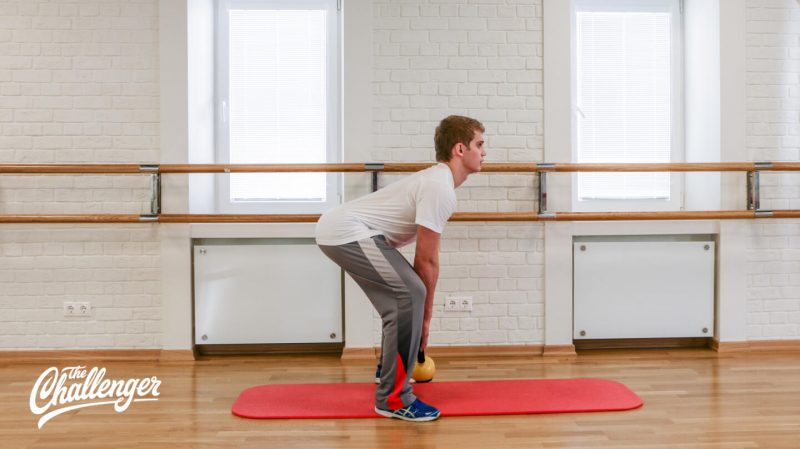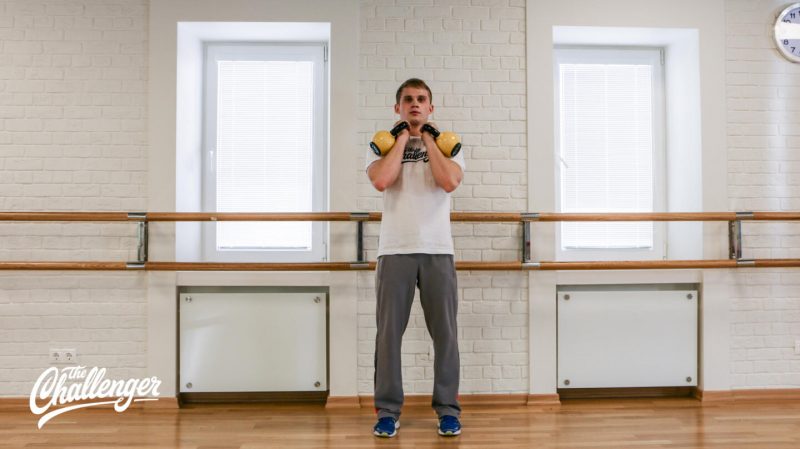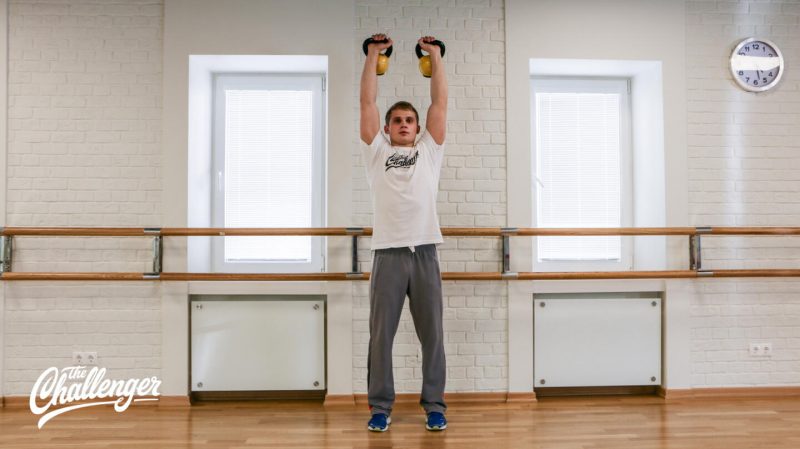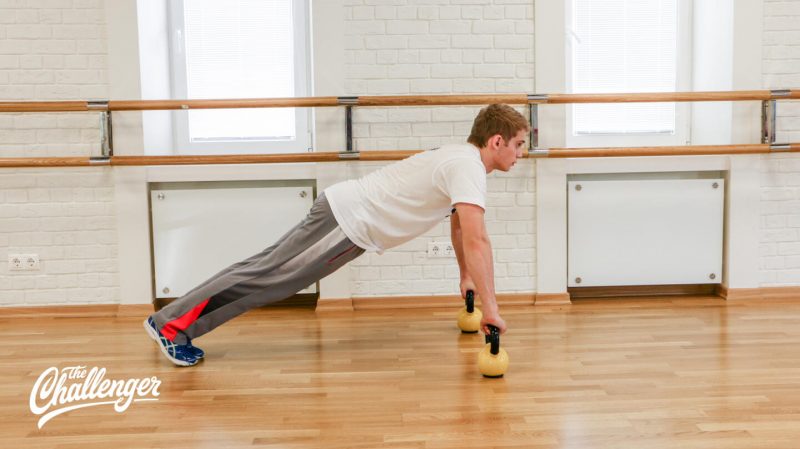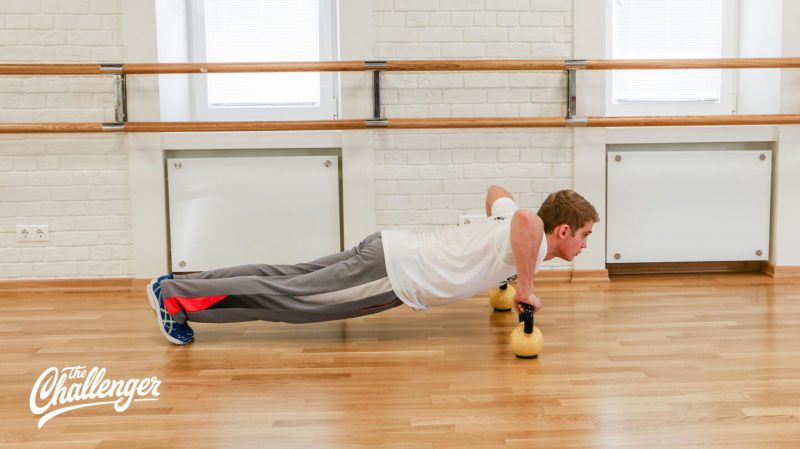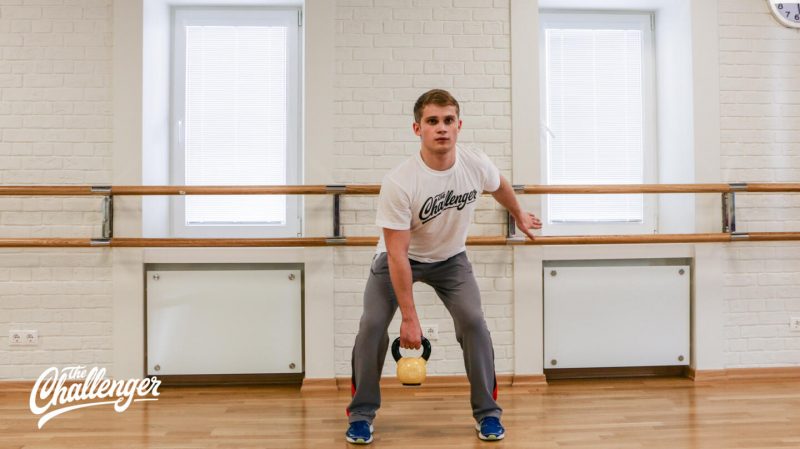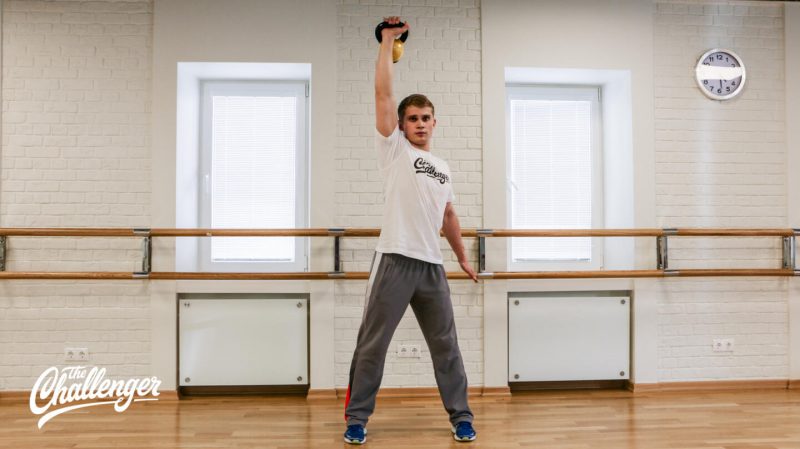С этими упражнениями вы не только улучшите свои силовые показатели, но и станете более гибким, выносливым и, конечно, стройным.
1. Махи с гирей
Встаньте прямо, возьмите гирю двумя руками и поднимите её перед собой. Затем немного согните колени (но не спину), прогнитесь в пояснице и одновременно сделайте мах руками — гиря должна пройти путь сверху вниз и оказаться между ваших ног. Помните: движение от маха до возвращения в начальную позицию должно происходить по большей части с помощью таза, а не рук.
Количество повторений: 12—20 раз.
2. Махи с гирей одной рукой
Упражнение похоже на первое, только в этом случае гирю держит одна рука. Делайте махи, и в моменты, когда гиря оказывается между ног, перехватывайте снаряд другой рукой.
Количество повторений: 12—20 раз.
3. Тяги с гирями к животу
Поставьте ноги на ширину плеч, прогнитесь в пояснице и немного согните колени. В каждой руке у вас должно быть по гире. Держите их прямо над ступнями и поднимайте к животу. Главное — не сгибайте спину.
Количество повторений: 12—20 раз.
4. «Восьмёрка» с гирей
Это упражнение похоже на дриблинг между ног в баскетболе. Возьмите гирю в левую руку и встаньте в начальную позицию — ноги на ширине плеч, колени немного согнуты, прогнитесь в пояснице. Гирю нужно провести за левую ногу, перехватить правой рукой и вернуть в положение между ног. Затем сделать то же самое с другой стороны. Такое непрерывное движение будет похоже на восьмёрку.
Количество повторений: 10—15 раз.
5. Приседания с гирей
Усложнённая версия стандартного приседания. Встаньте прямо, возьмите гирю двумя руками и держите её напротив груди так, чтобы локти касались туловища. Затем выполните обычное приседание (о том, как это сделать, мы уже писали в этом материале).
Количество повторений: 10—15 раз.
6. Высокая тяга с гирей
Возьмите гирю двумя руками, опустите между ног и сделайте приседание. При распрямлении тела поднимите её на уровень груди. Плечи при этом должны тоже подниматься вверх. Выполняя это упражнение, вы качаете не только ноги, но и руки.
Количество повторений: 10—15 раз.
7. Скручивания с гирей
Сядьте на пол, возьмите гирю двумя руками и держите её на уровне груди. Поднимите согнутые ноги и отклонитесь назад на 45 градусов. Поворачивайте торс влево и вправо вместе с гирей. Ноги при этом касаться пола не должны.
Количество повторений: 10—15 раз.
8. Жимы с гирями
Ложитесь на пол, согните ноги и возьмите в руки по гире. Упражнение очень простое: поднимайте гири над собой, а затем опускайте их к своей груди. Не забывайте следить за дыханием.
Количество повторений: 8—12 раз.
9. «Мёртвая» тяга с гирей
Возьмите гирю двумя руками, встаньте прямо и расставьте ноги на ширине плеч. Держите снаряд между ног. Наклонитесь вперёд, выгибаясь в пояснице и согнув колени, а затем распрямите тело и вернитесь в начальную позицию. Важно делать это упражнение не при помощи рук, а задействуя таз и спину.
Количество повторений: 10—15 раз.
10. Жим стоя с двумя гирями
Возьмите две гири за рукоятки так, чтобы снаряды находились с внешней стороны ладони. Поднимайте гири над головой. Стойте прямо и ни в коем случае не пытайтесь держать гири так, чтобы их вес приходился на пальцы. Это может быть травмоопасно.
Количество повторений: 10—15 раз.
11. Отжимания с гирями
Усложнённая версия классического упражнения. Встаньте в упор лёжа, положив руки на рукоятки гирь. Затем согните руки и опустите тело как при обычном отжимании.
Количество повторений: 6—12 раз.
12. Тяга с гирями в упоре лёжа
Встаньте в упор лёжа, руками оперевшись на рукоятки снарядов. Затем тяните одну гирю к своей груди так, чтобы локоть касался туловища, опустите её обратно. Поменяйте руки. Так вы тренируете не только бицепсы и трицепсы, но и мышцы спины и пресса.
Количество повторений: 12—20 раз.
13. Рывки с гирей
Возьмите гирю одной рукой и держите её между ног. Прогнитесь в пояснице, спину держите прямо. Ноги поставьте на ширину плеч и немного согните в коленях. Выполняя это упражнение, важно понимать, что движение должно получаться естественным и плавным. Начните делать махи с гирей, работая нижней частью тела: поднимите её сначала на уровень груди, затем над головой, а после опустите гирю до уровня коленей.
Количество повторений: 6—12 раз.
